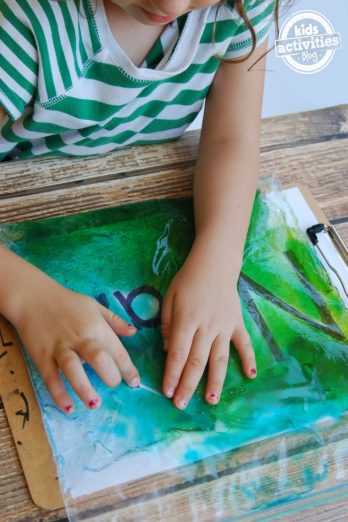If you’ve ever wondered how to teach your toddler the alphabet, you’ve come to the right place.
Simple alphabet activities are sometimes hard to find, so we’ve put together a list of ideas that are perfect for even the littlest learners.
HOW TO TEACH YOUR TODDLER THE ALPHABET
- This preschool alphabet packet has activities, book ideas, and worksheets for every single letter.
- Practice the sounds letters make with alphabet phonics cards.
- This letter recognition activity doubles as a yummy snack.
- Make a letter zip line for a fun and exciting activity!
- Match letters in this simple alphabet learning game.
- How fun is these alphabet exercises?
- Work on matching upper and lowercase letters with this alphabet sticky note wall.
- Go fishing for letters with this alphabet fishing game!
- Erase the ABCs for an easy to set up the game.
- Match letters with this alphabet bean literacy game.

ALPHABET ACTIVITIES FOR TODDLERS
- Practice writing letters with this no-mess painting activity.
- How fun is this pool noodle alphabet match game?
- Feed the alphabet monster is a fun way to work on letter recognition.
- Play hide-and-seek with this alphabet game!
- An outdoor letter match activity is perfect for summer.
- Practice letter recognition with this secret letters activity.
- Help toddlers work on name recognition with this pool noodle.
- Grab an old box for this letter matching activity.
- Play say and spray this summer!
- Practice tracing letters with this fun activity.

Hopefully, inspiration has hit that learning the alphabet is something that toddlers can have fun doing!














 Animal ABC’s Ring Flash Cards
Animal ABC’s Ring Flash Cards


 Gobblet Gobblers
Gobblet Gobblers









